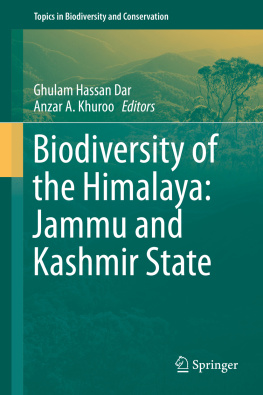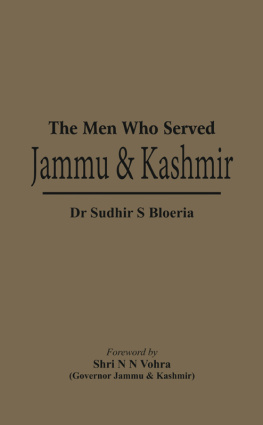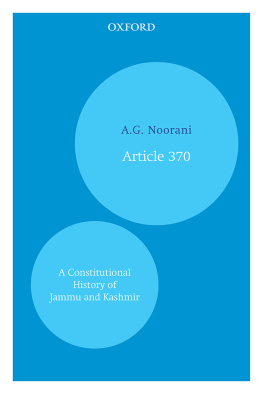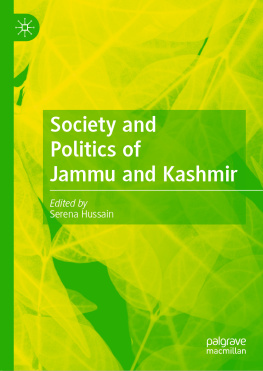Anzar A. Khuroo (editor) - Biodiversity of the Himalaya : Jammu and Kashmir State
Here you can read online Anzar A. Khuroo (editor) - Biodiversity of the Himalaya : Jammu and Kashmir State full text of the book (entire story) in english for free. Download pdf and epub, get meaning, cover and reviews about this ebook. year: 2020, publisher: Springer Singapore, genre: Politics. Description of the work, (preface) as well as reviews are available. Best literature library LitArk.com created for fans of good reading and offers a wide selection of genres:
Romance novel
Science fiction
Adventure
Detective
Science
History
Home and family
Prose
Art
Politics
Computer
Non-fiction
Religion
Business
Children
Humor
Choose a favorite category and find really read worthwhile books. Enjoy immersion in the world of imagination, feel the emotions of the characters or learn something new for yourself, make an fascinating discovery.
- Book:Biodiversity of the Himalaya : Jammu and Kashmir State
- Author:
- Publisher:Springer Singapore
- Genre:
- Year:2020
- Rating:4 / 5
- Favourites:Add to favourites
- Your mark:
- 80
- 1
- 2
- 3
- 4
- 5
Biodiversity of the Himalaya : Jammu and Kashmir State: summary, description and annotation
We offer to read an annotation, description, summary or preface (depends on what the author of the book "Biodiversity of the Himalaya : Jammu and Kashmir State" wrote himself). If you haven't found the necessary information about the book — write in the comments, we will try to find it.
Biodiversity of the Himalaya : Jammu and Kashmir State — read online for free the complete book (whole text) full work
Below is the text of the book, divided by pages. System saving the place of the last page read, allows you to conveniently read the book "Biodiversity of the Himalaya : Jammu and Kashmir State" online for free, without having to search again every time where you left off. Put a bookmark, and you can go to the page where you finished reading at any time.
Font size:
Interval:
Bookmark:
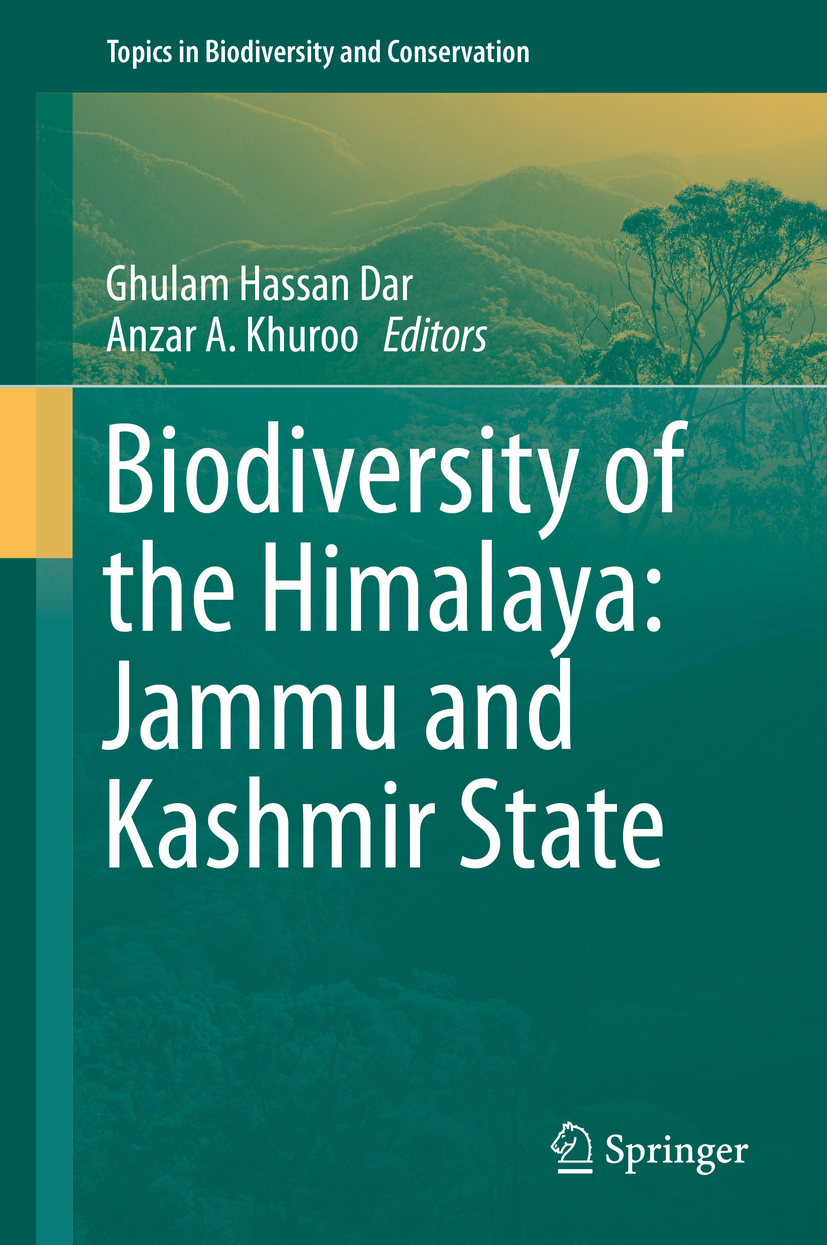
Springers book series, Topics in Biodiversity and Conservation, brings together some of the most exciting and topical papers in biodiversity and conservation research. The result is a series of useful themed collections covering issues such as the diversity and conservation of specific habitats or groups of organisms, and the key dilemma of resource use versus conservation.
Based on Springers popular journal, Biodiversity and Conservation, the series provides access to selected peer-reviewed papers which represent the cutting edge of current research to provide a valuable overview of progress in each topic addressed. With their diversity of case studies and depth of investigation, these collections will be of particular interest for courses including biodiversity and/or conservation issues, and to advanced students and researchers working in related fields.
More information about this series at http://www.springer.com/series/7488

This Springer imprint is published by the registered company Springer Nature Singapore Pte Ltd.
The registered company address is: 152 Beach Road, #21-01/04 Gateway East, Singapore 189721, Singapore
Jammu and Kashmir: Resurrecting the Paradise for Sustaining Biodiversity
Global environmental challenges need to be addressed everywhere but perhaps more so in the Himalaya than anywhere in the world. The Himalaya is a biodiversity hotspot, source of Asias eight largest rivers, and the third pole with the amount of ice stored in the glaciers being only next to the two poles. The natural assets of the Himalaya sustain approximately one fifth of the humanity.
Within the Himalaya, the State of Jammu and Kashmir occupies a special position, once called a paradise on Earth because of its spectacular beauty and cultural and natural endowment. This westernmost State of the Indian Himalaya contains approximately one half of biodiversity found in the Indian part of this great mountain chain. Jammu and Kashmir is also a source of major rivers, fed by glaciers in the high mountains, for the provinces of Punjab in both Pakistan and India that constitute the breadbaskets of both the countries.
This remarkable book by Ghulam Hassan Dar and Anzar A. Khuroo provides a comprehensive account of the biodiversity of the State. Rich in information about floral and faunal diversity, the book emphasizes the need for further exploration in vast areas that have not been explored. Threats to biodiversity are the subject of a couple of chapters. Another set of chapters outlines the steps needed to conserve biodiversity.
Humanity is facing a first rate crisis in stemming the loss of biodiversity and the services it provides to support human endeavors. Jammu and Kashmir faces a particular challenge in conserving its natural heritage. The region is beset with political conflict with both India and Pakistan caught in a bitter struggle over rival claims to the State. Sound governance is a prerequisite for conserving biodiversity, but good governance requires cooperation and collaboration among stakeholders. With violence almost a daily occurrence, biodiversity takes a back stage.
Perhaps, the book can garner support to conserve the incredible biodiversity and beauty of the State. A desire to combat environmental challenges that pose a greater threat to human security than political ones can usher a new era of peace for the people and the biodiversity around them, regaining a paradise lost a generation or two ago.
Since the earliest humans settled there, it has been obvious that the State of Jammu and Kashmir (J&K) is incredibly rich in different kinds of plants and animals, an endowment that has come to be known as biodiversity. This richness was surely one reason for the Mughal emperor Jahangirs calling Kashmir a paradise on Earth, a factual depiction of its biological wonders among other very special features of structure and environment. In modern times, we have come to ask about quantitative assessment of this biological richness of the State as a whole. A good deal of scientific work on biodiversity has been conducted in J&K State over the years, but no adequate summary of rich information contained in the hundreds of papers and books dealing with the subject has yet been offered. To do just that is what this book is for.
Collectively, biodiversity has become a widespread and fundamentally important human concern. Just after the concept was developed, some 50 years ago, it became generally known that the humans are wholly dependent on the living world and that the elements that make it up, species, are disappearing at a speed unprecedented for tens of millions of years. It has come to be known that the more comprehensive the knowledge of local biodiversity, the better strategies a country or region can develop for its socioeconomic development.
The flora and fauna of J&K State have been studied by many workers for over two centuries, with the numerous results scattered widely in such publications as journals, books, checklists, newsletters, conference and workshop proceedings, and miscellaneous reports. Many of these are out of print or rare and difficult to obtain, making the task of summarizing the information they contain all the more difficult. Difficulties of this sort encountered in the course of our taxonomic studies provided the impetus for our attempt to bring it together in a single, convenient, and authentic source of information on what is known about the J&K States biota. This turned out to be a much larger job than we had first envisioned and has taken some years to bring to completion.
Font size:
Interval:
Bookmark:
Similar books «Biodiversity of the Himalaya : Jammu and Kashmir State»
Look at similar books to Biodiversity of the Himalaya : Jammu and Kashmir State. We have selected literature similar in name and meaning in the hope of providing readers with more options to find new, interesting, not yet read works.
Discussion, reviews of the book Biodiversity of the Himalaya : Jammu and Kashmir State and just readers' own opinions. Leave your comments, write what you think about the work, its meaning or the main characters. Specify what exactly you liked and what you didn't like, and why you think so.

